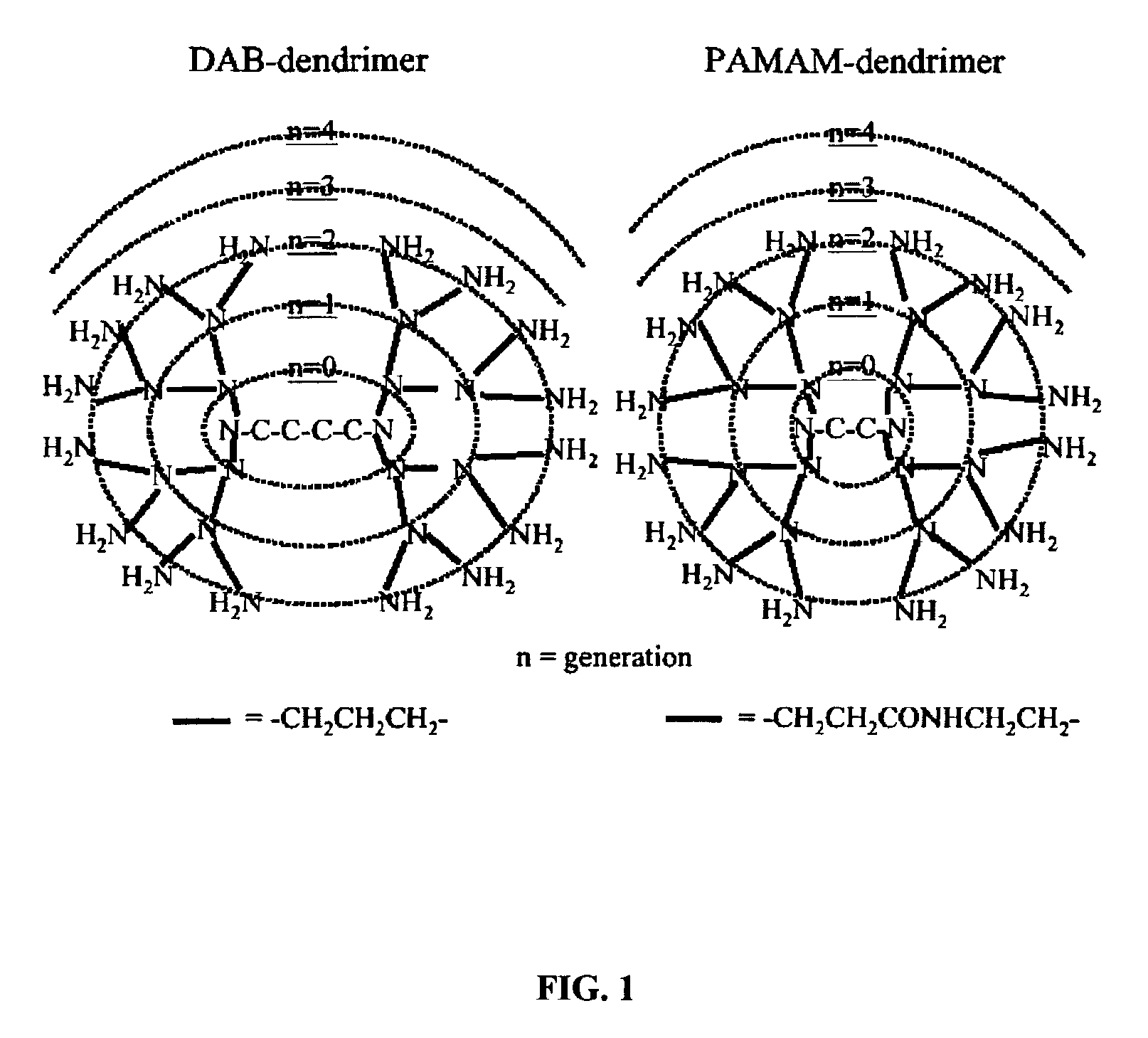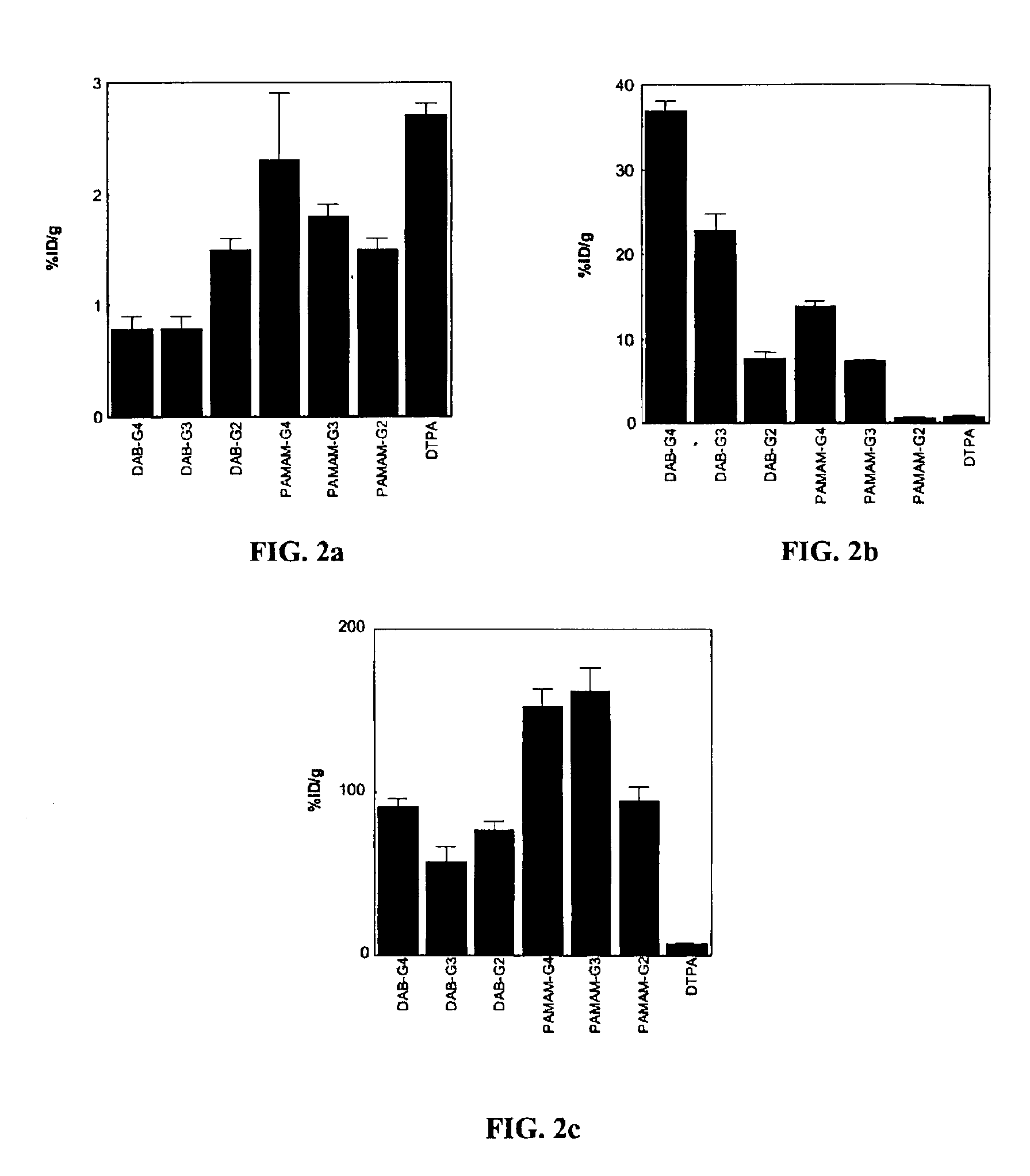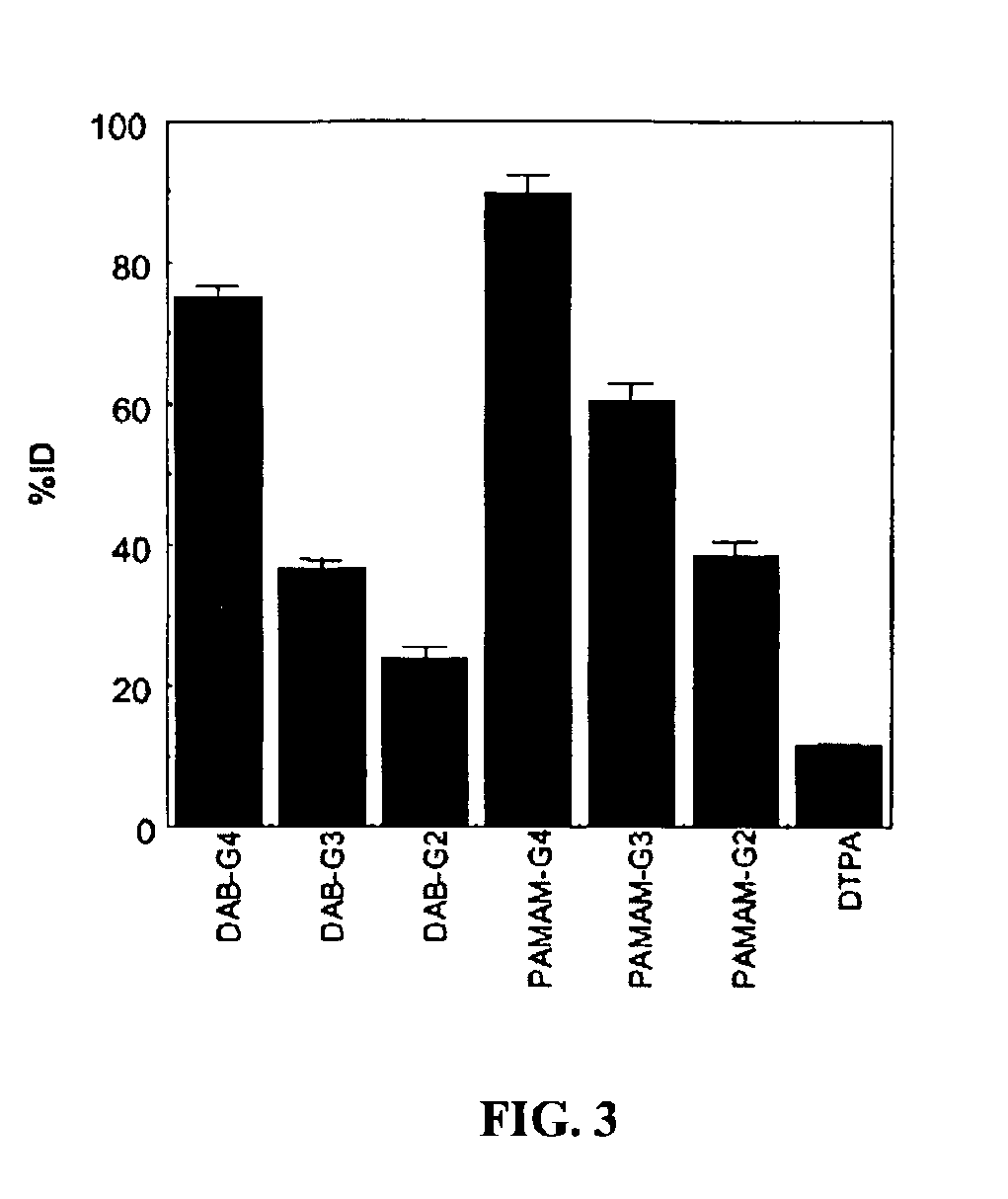Methods for functional kidney imaging using small dendrimer contrast agents
a technology of dendrimer and contrast agent, applied in the field of mri methods, can solve the problems of loss of mri signal through saturation effect, limited cell penetration, and selection of dendrimer-based contrast agent suitable for imaging a particular tissue or tissue function, and achieve the effect of abnormal kidney function
- Summary
- Abstract
- Description
- Claims
- Application Information
AI Technical Summary
Benefits of technology
Problems solved by technology
Method used
Image
Examples
example 1
Preparation of Dendrimer Conjugates
[0059]Dendrimers were concentrated to 10 mg / ml, and diafiltrated against 0.1 M sodium phosphate buffer at pH 9 and reacted at 40° C. with a 16, 32, or 64-fold molar, excess of 2-(p-isothiocyanatobenzyl)-6-methyl-diethylenetriaminepentaacetic acid (1B4M) for the generation-2, -3, and -4 PAMAM and DAB dendrimers, respectively. The reaction solutions were maintained at pH 9 with 1 M NaOH over the reaction time of 48 hr. Additional 1B4M equal to the initial amount was added as a solid after 24 hours to each reaction. The resulting preparation was purified by diafiltration using a Centricon 30 (Amicon Co., Beverly, Mass.) for the generation-4 dendrimers and a Centricon 10 (Amicon Co.) for generation-2 and -3 dendrimers. Over 98% of the amine groups on the dendrimers reacted with the 1B4M as determined by a 153Gd labeling assay of the products.
[0060]Radioactive dendrimer conjugates used for biodistribution studies were prepared as follows. 153GdCl3 conta...
example 2
Biodistribution and Whole Body Retention of 153Gd-Labeled Dendrimer-1B4M-Gd Conjugates
[0063]Seven groups of nude mice (n=4 in each group) were injected with 37 kBq (1 μCi) / 200 μl of 153Gd-labeled dendrimer-1B4M-Gd conjugates or 153Gd-DTPA. The injected samples were added to non-radioactive preparations and the total gadolinium dose was adjusted to 0.02 mmol Gd / kg, 20% of the dose of Gd-[DTPA]-dimeglumine routinely used clinically. The mice were sacrificed 15 min after the injection of the 153Gd-labeled preparations and biodistribution studies were performed. The data were expressed as the percentage of the injected dose per gram (% ID / g) of tissue. The carcasses of the mice were also counted to calculate the whole body retention (% ID).
[0064]The 153Gd-labeled DAB-based agents accumulated significantly greater in the liver (FIG. 2b) and less in the kidney (FIG. 2c) than 153Gd-labeled PAMAM-based agents (p153Gd-labeled DAB-based agents remaining in the blood (FIG. 2a) increased as the...
example 3
Contrast-Enhanced Dynamic 3D-Micro-MRI of Mice
[0065]To evaluate the whole body pharmacokinetics of the contrast agents, seven groups of 8-week-old female nude mice (n=4 in each group) (NCI, Frederick, Md.) were used to obtain contrast-enhanced dynamic 3D-micro-MR images. Briefly, either 0.03 mmol Gd / kg (30% of clinical dose) of dendrimer-1B4M-Gd conjugates or 0.1 mmol Gd / kg of Gd-[DTPA]-dimeglumine (Magnevist, Schering, Berlin, Germany) were intravenously injected into the left tail vein. All images were obtained using the high-resolution wrist coil (GE) with a custom mouse holder using a clinical-grade 1.5-tesla superconductive magnet unit (Signa LX, General Electric Medical System, Milwaukee, Wis.). The mice were anesthetized with 1.15 mg of sodium pentobarbital (Dainabot, Osaka, Japan) and placed in the center of the coils. The fast spoiled gradient echo technique (FSPGR; TR / TE 19.4 / 4.2; flip angle 60°; scan time 1′40″; phase encoding steps 256×256; 3 number of excitations; slab ...
PUM
| Property | Measurement | Unit |
|---|---|---|
| Substance count | aaaaa | aaaaa |
| Substance count | aaaaa | aaaaa |
| Substance count | aaaaa | aaaaa |
Abstract
Description
Claims
Application Information
 Login to View More
Login to View More - R&D
- Intellectual Property
- Life Sciences
- Materials
- Tech Scout
- Unparalleled Data Quality
- Higher Quality Content
- 60% Fewer Hallucinations
Browse by: Latest US Patents, China's latest patents, Technical Efficacy Thesaurus, Application Domain, Technology Topic, Popular Technical Reports.
© 2025 PatSnap. All rights reserved.Legal|Privacy policy|Modern Slavery Act Transparency Statement|Sitemap|About US| Contact US: help@patsnap.com



